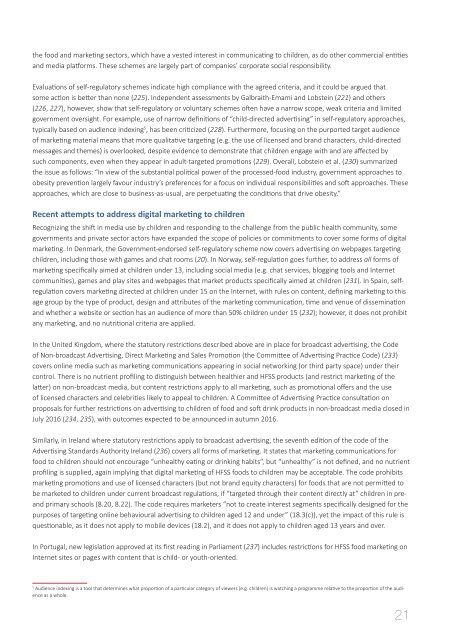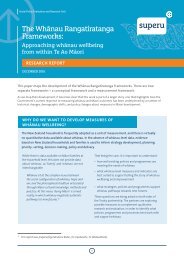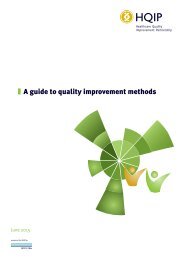2fyY1Py
2fyY1Py
2fyY1Py
You also want an ePaper? Increase the reach of your titles
YUMPU automatically turns print PDFs into web optimized ePapers that Google loves.
the food and marketing sectors, which have a vested interest in communicating to children, as do other commercial entities<br />
and media platforms. These schemes are largely part of companies’ corporate social responsibility.<br />
Evaluations of self-regulatory schemes indicate high compliance with the agreed criteria, and it could be argued that<br />
some action is better than none (225). Independent assessments by Galbraith-Emami and Lobstein (221) and others<br />
(226, 227), however, show that self-regulatory or voluntary schemes often have a narrow scope, weak criteria and limited<br />
government oversight. For example, use of narrow definitions of “child-directed advertising” in self-regulatory approaches,<br />
typically based on audience indexing 5 , has been criticized (228). Furthermore, focusing on the purported target audience<br />
of marketing material means that more qualitative targeting (e.g. the use of licensed and brand characters, child-directed<br />
messages and themes) is overlooked, despite evidence to demonstrate that children engage with and are affected by<br />
such components, even when they appear in adult-targeted promotions (229). Overall, Lobstein et al. (230) summarized<br />
the issue as follows: “In view of the substantial political power of the processed-food industry, government approaches to<br />
obesity prevention largely favour industry’s preferences for a focus on individual responsibilities and soft approaches. These<br />
approaches, which are close to business-as-usual, are perpetuating the conditions that drive obesity.”<br />
Recent attempts to address digital marketing to children<br />
Recognizing the shift in media use by children and responding to the challenge from the public health community, some<br />
governments and private sector actors have expanded the scope of policies or commitments to cover some forms of digital<br />
marketing. In Denmark, the Government-endorsed self-regulatory scheme now covers advertising on webpages targeting<br />
children, including those with games and chat rooms (20). In Norway, self-regulation goes further, to address all forms of<br />
marketing specifically aimed at children under 13, including social media (e.g. chat services, blogging tools and Internet<br />
communities), games and play sites and webpages that market products specifically aimed at children (231). In Spain, selfregulation<br />
covers marketing directed at children under 15 on the Internet, with rules on content, defining marketing to this<br />
age group by the type of product, design and attributes of the marketing communication, time and venue of dissemination<br />
and whether a website or section has an audience of more than 50% children under 15 (232); however, it does not prohibit<br />
any marketing, and no nutritional criteria are applied.<br />
In the United Kingdom, where the statutory restrictions described above are in place for broadcast advertising, the Code<br />
of Non-broadcast Advertising, Direct Marketing and Sales Promotion (the Committee of Advertising Practice Code) (233)<br />
covers online media such as marketing communications appearing in social networking (or third party space) under their<br />
control. There is no nutrient profiling to distinguish between healthier and HFSS products (and restrict marketing of the<br />
latter) on non-broadcast media, but content restrictions apply to all marketing, such as promotional offers and the use<br />
of licensed characters and celebrities likely to appeal to children. A Committee of Advertising Practice consultation on<br />
proposals for further restrictions on advertising to children of food and soft drink products in non-broadcast media closed in<br />
July 2016 (234, 235), with outcomes expected to be announced in autumn 2016.<br />
Similarly, in Ireland where statutory restrictions apply to broadcast advertising, the seventh edition of the code of the<br />
Advertising Standards Authority Ireland (236) covers all forms of marketing. It states that marketing communications for<br />
food to children should not encourage “unhealthy eating or drinking habits”, but “unhealthy” is not defined, and no nutrient<br />
profiling is supplied, again implying that digital marketing of HFSS foods to children may be acceptable. The code prohibits<br />
marketing promotions and use of licensed characters (but not brand equity characters) for foods that are not permitted to<br />
be marketed to children under current broadcast regulations, if “targeted through their content directly at” children in preand<br />
primary schools (8.20, 8.22). The code requires marketers “not to create interest segments specifically designed for the<br />
purposes of targeting online behavioural advertising to children aged 12 and under” (18.3(c)), yet the impact of this rule is<br />
questionable, as it does not apply to mobile devices (18.2), and it does not apply to children aged 13 years and over.<br />
In Portugal, new legislation approved at its first reading in Parliament (237) includes restrictions for HFSS food marketing on<br />
Internet sites or pages with content that is child- or youth-oriented.<br />
5<br />
Audience indexing is a tool that determines what proportion of a particular category of viewers (e.g. children) is watching a programme relative to the proportion of the audience<br />
as a whole.<br />
21






